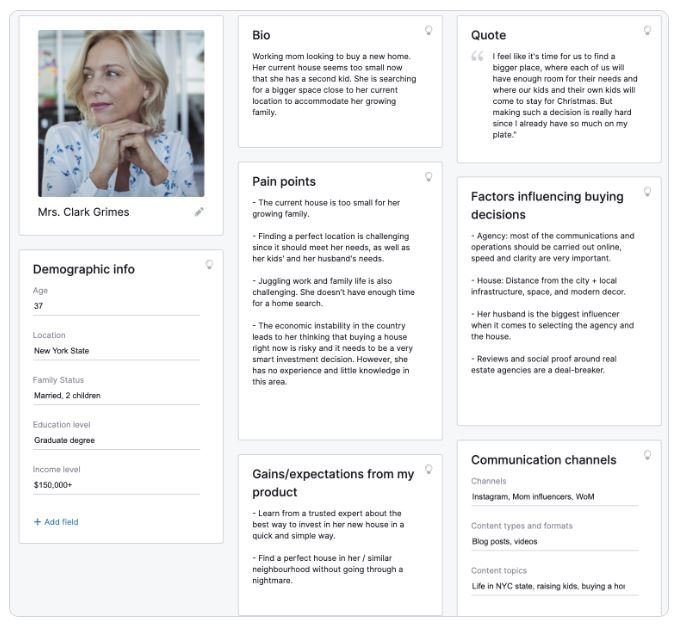Content Marketing Series: Defining Your Audience
A complete content marketing strategy has many components. In addition to creating content for different stages of the buying cycle and defining your marketing goals, you’ll need to consider the type of customer your content needs to address. This will be your target audience.
However, because most products and services are used by more than one group, or demographic, most businesses will need to do more. An effective content marketing strategy takes into account all types of customers (or personas) who might benefit from what they have to offer in order to appeal to all of them.
Let’s take a look at the nuances of defining and segmenting your audience.
Who Is Your Target Audience?
Your target audience is the customers who want or need your product or service. These are the people you will build content for. Your target audience can be broad (like a shoe store that sells to all ages and genders) or niche (like an orthopedic shoe company that sells only to people with foot issues).
Knowing the characteristics they share, you can tailor your content to speak in a way your audience will understand.
Here are a few ways you can start defining your target audience.
Analyze your existing customer base to see who’s already buying from you
Look at the customers of your closest competitors
Understand your audience’s purchase intent and buying motivations
Explore your audience’s interests, hobbies, or other shared characteristics
Define who isn’t in your target audience
Pro Tip: Having tangible data to inform your audience definition makes for a more robust content strategy. At Prime 8, Google Analytics and SEMRush are two tools we use to track who’s visiting our website and engaging with our social media channels.
Segmenting Your Target Audience
The point of content marketing is to hit the right audience with the right message in the right place at the right time. While some content can cater to a broad audience, getting people to the cash register will require storytelling that contains enough specific details to resonate with your audience.This is why segmenting your audience is an important content marketing prerequisite.
Within an audience, there are different types of buyers. You might notice them in your selling process. Or you might notice these differences as you analyze your sales pipeline, report out on your website traffic or review your social media analytics.
An audience can be separated, based on how they behave before they buy, where they live, their attitudes about your industry, what hobbies they have, even what other products they purchase. Any technology tool you use in marketing or sales today will produce valuable data you can leverage to begin categorizing your audience. The more you know about your audience, the better chance you have of engaging your audience with content tailored just for them.
Targeting your content and other go-to-market activities to groups of buyers with similar needs, problems and characteristics together optimizes your marketing plans for maximum outcome. That said, segmentation analysis can be an expensive and time-consuming rabbit hole if you’re just getting started with content marketing. Luckily, audiences can be separated into groups at different levels of detail.
Let’s look at them.
WHAT ARE AUDIENCE SEGMENTS?
Audience segments tend to be broad categories defined based on four basic data types: behavior, geography, demographics, and psychographics. All audiences can be segmented using these data types, but the key is understanding which ones are going to add value to the stories you need to tell in your content.
Generally speaking, segments are a combination of at least two data types. If you sell sheets, for example, first-year college students (demographic) doing school shopping (behavioral) might be a good place to start with your segmentation.
You might’ve heard the phrase “meet your customers where they are.” As you analyze your data, watch for clues that tell you where your audience spends time in the digital ecosphere. Are they on Instagram or TikTok? Do they read long-form content or watch videos? Through what channel do they consume the local and national news? Do they spend time on third-party publishing sites to keep up with their profession?
These details will not only inform the content types you develop, they will also guide the placement of your content in the digital paths of the people you’re trying to target.
WHAT ARE BUYER PERSONAS?
Personas are a more detailed way of segmenting your audience. They are vivid, fictional profiles of your customers that are deeper slices of an audience segment. They provide rich detail about the buyer that helps content writers craft stories that resonate strongly.
One audience segment might have multiple personas. Each persona describes your ideal customer’s pain points, priorities, preferences, and what’s most likely to entice them to buy.
Here’s a simple example from Hootsuite.
And a more in-depth example from SEMRush.
A word of caution here: Segmenting your audience can be time-consuming and keep you from getting to market, resulting in missed opportunities. There is a spectrum to consider. Some companies operate just fine with only a couple audience segments, while others develop a dozen personas and document each with a crazy amount of detail.
One tech company I worked for spent years developing and evolving a collection of personas so detailed they knew toothpaste brand preferences for each of their personas! Keep the right perspective here. The brand of toothpaste used had zero effect on marketing outcomes.
How To Segment Your Audience
Whether you choose audience segments or the more-detailed personas, knowing a customer’s needs, pain points, and motivations allows you to form stronger connections with them through your content. It helps you to put your product or service into context in a way your potential customers can understand and identify with.
Finally, don’t let a lack of formalized segments or highly detailed personas keep you from developing content and creating a presence in the market. A trial-and-error approach to content with one or two high-level segments is a great starting place while you build out a more mature framework.
Here are some things to look at when segmenting audiences:
Start with data. Identify, collect, and analyze the data available through your website and current toolset. What trends do you see?
Look at your current customers to spot commonalities.
Fill in basic demographic information (e.g., age, geographic location, etc.).
What keeps your audience awake at night? What problems do they need to solve? Don’t know? Ask your current customers.
When making buying decisions, what does the audience prioritize (price, convenience, etc.)?
What concerns block your audience from making a buying decision?
What content types does your audience tend to engage with?
Document your findings and socialize with your stakeholders.
Ultimately, the goal is to create digital content that speaks directly to the people you’re trying to attract and sell to.
Messaging To Your Audience
Now that you know who your audience is and what they care about, you can start building a messaging and positioning framework (MPF) that will also serve as a guide for building content.
The MPF is a one-page strategic planning document that outlines the unique value proposition of a product or service relative to an audience segment. It’s an organizational reference that summarizes the customer and audience research and outlines their specific pain points. MPFs outline how your company solves those problems; it provides key messages and supporting evidence that will support the go-to-market for the product or service.
The MPF is a structured representation of a brand’s unique selling propositions (USPs) and positions your product in the market relative to the competition. This brand artifact makes it easy to understand what a company offers in terms of benefits to customers and what differentiates them from competitors.
Find an MPF template online (there are many) that fits with your organization’s maturity and work with your stakeholders to document the audience’s problems, your value propositions and key messages.
Here is a simplified example we often use in client work.
The MPF is a critical marketing artifact that guides your content strategy. It’s the official record of how you’ll talk to your audience about your product and helps align your organization around product messaging. We refer back to our own MPFs when planning a new campaign, onboarding a new writer, or even determining what topics we should write about. It’s an invaluable content marketing resource.
Improve Your Content Strategy with Prime 8
Defining your audience is just one essential part of an effective content strategy. If you’re serious about meeting your marketing goals, you need to create a strategy where all parts work together.
Prime 8 consultants specialize in both the strategy and the execution of digital marketing, including content. We’re experts at seeing the big picture, like the buyer’s journey and customer personas, as well as fine-tuning the details that make the magic happen.
If you’d like to explore how we can help, reach out to us. If you’d like to explore consulting as a career, check out working with Prime 8 to learn more.




















